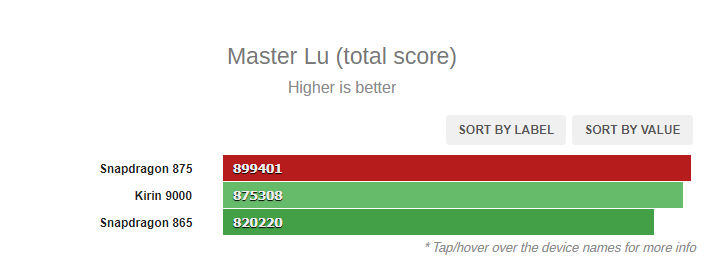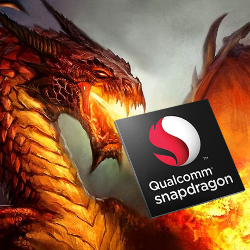Kev iab liam tshwj xeeb ntawm Qualcomm's yavtom ntej Snapdragon 875 flagship chipset tau tawm mus rau saum huab cua. Nws yuav tsum muaj lub zog loj Cortex-X1 processor cores khiav ntawm 2,84 GHz, peb lub zog Cortex-A78 cores clocked ntawm 2,42 GHz thiab plaub kev lag luam Cortex-A55 cores clocked. ntawm 1,8 GHz. Tom qab qhov xau yog tus paub zoo Suav blogger mus los ntawm lub npe Digital Chat Station.
Lub ntsiab Cortex-X1 core yuav tsum muaj txog li 23% muaj zog dua li Cortex-A78 core. Cov Chaw Sib Tham Digital kuj tau lees paub tias Snapdragon 875 yuav tsim los ntawm cov txheej txheem 5nm (5nm + txheej txheem kom meej) thiab cov haujlwm ua haujlwm yuav raug tswj hwm los ntawm Adreno 660 nti. muaj qhov tsis zoo thiab kev nco dhau los.
Koj tuaj yeem txaus siab rau

Lub chipset yuav sib tw nrog cov uas twb tso tawm Kirin 9000 nti (powering lub tshiab Huawei Mate 40 flagship series) thiab yavtom ntej Exynos 2100 nti. , ntaus Kirin 848 los ntawm kwv yees li 000% thiab ntau dua 18% "ntxiv" version ntawm Snapdragon 9000. Hauv lwm qhov kev ntsuas, Master Lu yog kwv yees li 25% sai dua li Kirin 865. Exynos 3, uas - nrog rau Snapdragon 9000 - yuav pom meej zog Samsung lub xov tooj tshiab flagship Galaxy S21 (S30), tseem tsis tau tshwm sim hauv cov qauv ntsuas.
Lub Snapdragon 875 yuav tsum tau nthuav tawm thaum Lub Kaum Ob Hlis, thiab raws li cov ntaub ntawv tsis raug cai tshiab, qhov "flagship" tom ntej ntawm Xiaomi Mi 11 yuav yog thawj tus tau txais.


